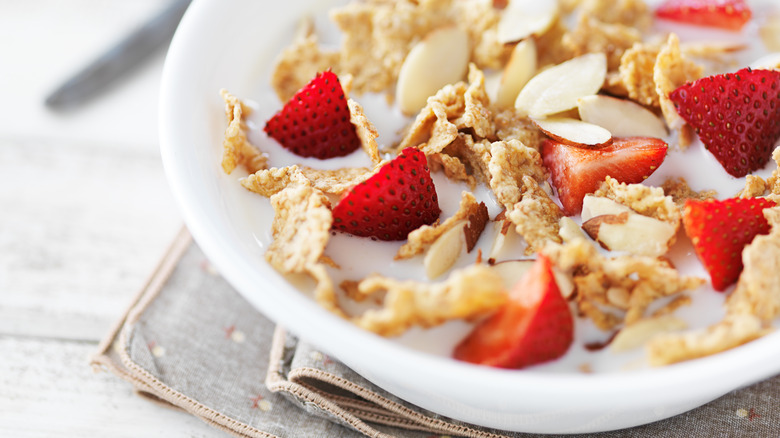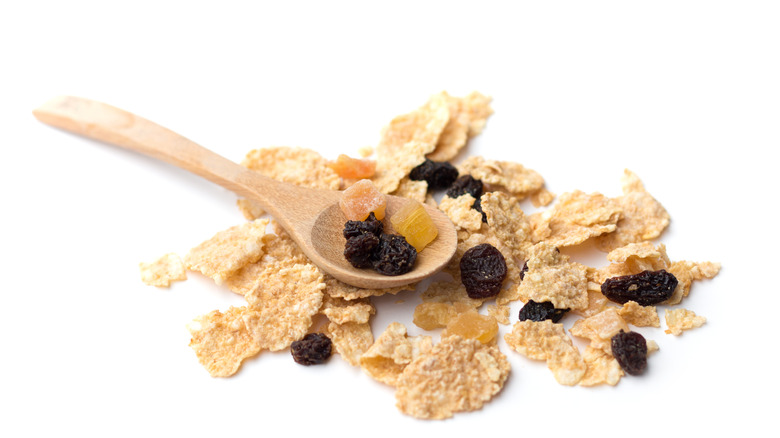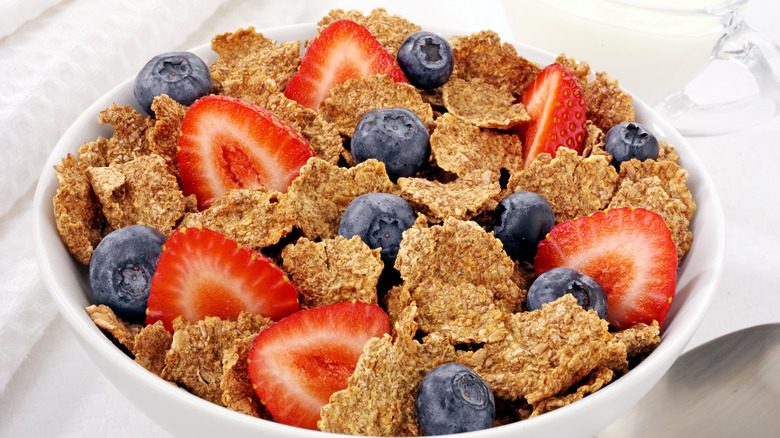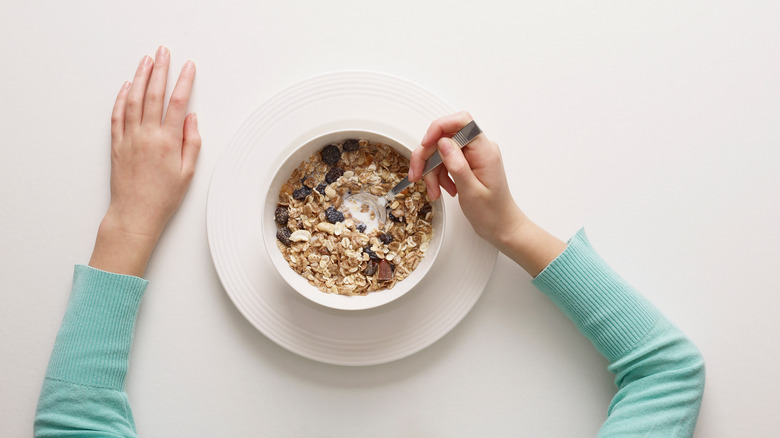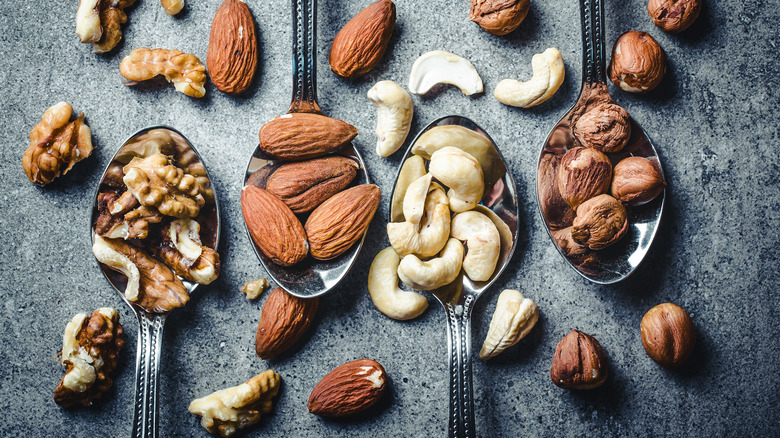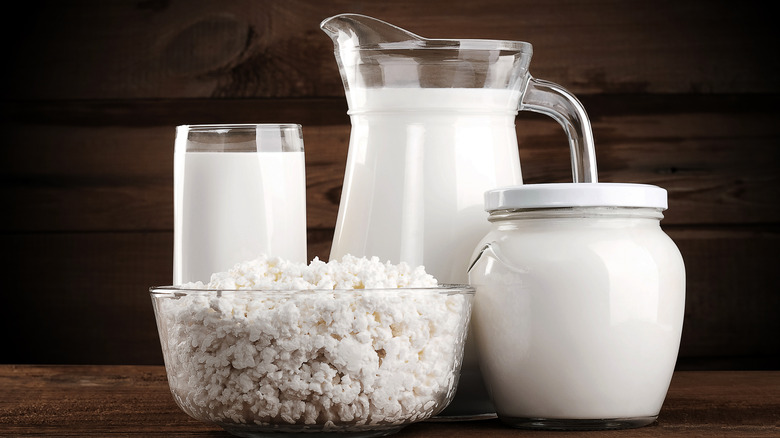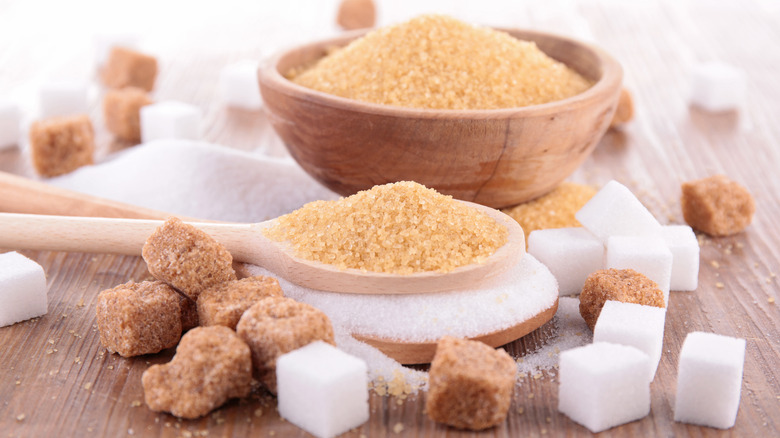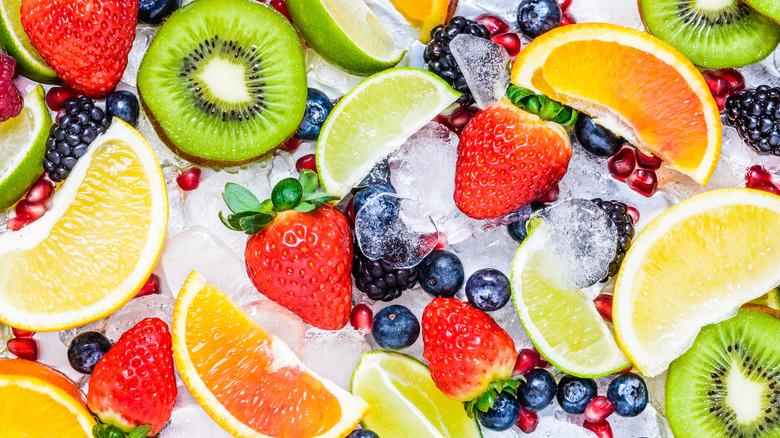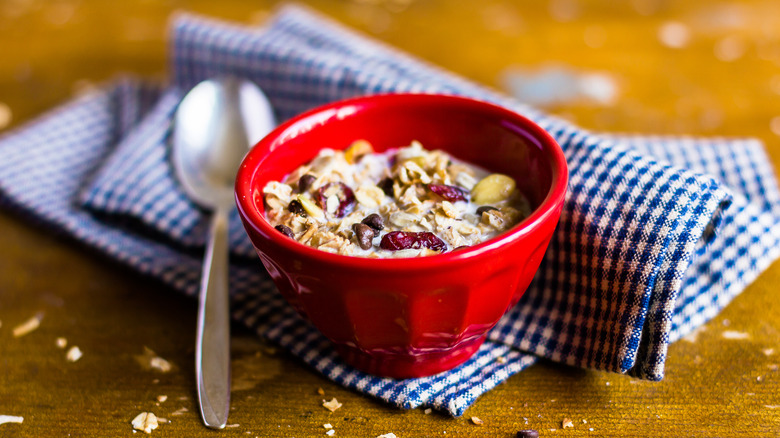Healthy Hacks To Make A Bowl Of Cereal More Filling
When it comes to quick and easy breakfast, it doesn't get much easier than a bowl of cereal with milk. It's convenient and requires no cooking. The only downside? It's not always the most filling option, which means your stomach starts growling partway through your morning — kind of a pain if you've got a lot to do and want to avoid hangry outbursts. Sure, you could have a second bowl, but why not make it easier to get more bang for your nutritional buck with the first one?
As a dietitian and health coach, I help my clients streamline their healthy morning routine without skimping on nutrition or taste. Starting your day with a solid breakfast helps set you up for a productive, powerful day. These simple hacks will upgrade your a.m. bowl of cereal and actually keep you going until lunch.
Go with whole grain
Scope out the label to make sure that a whole grain is the first ingredient. A few good examples are oats, whole wheat, barley, buckwheat, quinoa, brown rice, and amaranth. For a similar calorie content to refined grains, you'll get more nutrients like B-vitamins and iron along with filling fiber. Yes, many refined cereals are fortified with those missing nutrients, but think about it this way: Those grains had to be refined to take all that stuff out, and then it was added back in a separate process. So much work! Why not just eat stuff that's naturally nutritious from the get-go without all that processing?
Filll up with fiber
Starting with a whole grain cereal is a good first step for making sure your meal is high in filling fiber. So why is fiber so important? Fiber slows digestion by taking up space in the GI tract. Soluble fiber makes a gel-like substance as it combines with water in the intestines, and insoluble fiber moves through the GI system, promoting regular digestion.
Aim for a cereal with at least four grams of fiber per serving. Aside from keeping you satisfied, it also helps you meet that recommended daily goal of 25-35 grams. Just keep in mind that when it comes to a refined cereal with fiber added to it, the label may boast a lot of grams, but what you're often getting is dressed-up junk food. To increase fiber naturally, top your cereal with a tablespoon or two of nuts or add a high-fiber fruit like blueberries (four grams per cup) or half a cup of chopped apple (two grams) .
Prioritize protein
Protein promotes satiety by helping slow digestion to buffer the breakdown of the carbs in your cereal — key to enjoying slow-burning energy that lasts all morning. Cow's milk provides about eight grams of protein per cup. In case you were wondering, skim, low-fat, and whole milk all have the same amount of protein.
For those avoiding dairy, soy milk and pea protein milk also provide about eight grams per cup. Just keep in mind that many other non-dairy milks like almond and coconut have very little protein. It's totally okay to use them — you just want to make sure you're getting some protein into your bowl another way. For example, you could add a few tablespoons of nuts or seeds, or whisk some protein powder into the milk before adding your cereal.
Some cereals on the market have added protein, but check the label — soy protein isolate is a commonly used source, but it's a processed form of soy best kept on the "in moderation" list.
Don't fear fat
Because it helps slow digestion, incorporating some fat into your breakfast can boost staying power. Another reason to include fat in your morning meal is that it helps enhance the absorption of certain fat-soluble nutrients in your food like Vitamins A and D.
Just note that a little goes a long way, as fat is calories-dense at nine calories per gram. Using a milk or yogurt that contains fat is one option. You can also top your bowl with nuts, seeds, or coconut flakes, or drizzle a little nut or seed butter on top as well. Again, just keep portions in mind, and take into consideration what else you're having in your meal. If you're having whole milk and there are almonds in your cereal, you may not need to add anything else.
Get cultured
Another cereal solution I often recommend is swapping out the milk in your bowl for yogurt or kefir. You'll get at least 12 grams of protein per cup, and even more if you use Greek or Icelandic yogurt, both of which are strained. Cultured cottage cheese is another good option. Aside from boosting staying power thanks to the protein, beneficial probiotic bacteria found in fermented dairy products may help support regular digestion and overall wellness. When our digestive system is good working order, it can help us feel more in touch with feelings of hunger and fullness.
Go slow with sugar
Not like this is breaking news or anything, but sugar is not your friend when it comes to getting the most mileage from your breakfast. Aside from adding empty calories, it messes with blood glucose control, especially when it's eaten without a lot of fat, protein, or fiber to buffer the breakdown of those simple carbs.
Ever wonder why you feel like a hangry beast an hour after eating, like, a donut or toaster pastry? Similar thing. This sets you up for an irritable mood and a feeling of not being able to stay full—not conducive to happy fun times or productivity. The insulin spike we get from taking in a big hit of sugar and the energy crash that follows can wreak havoc on our hunger hormones and makes it hard to regulate appetite throughout the day.
Look for cereals with less than five grams sugar per serving, which is equivalent to just over a teaspoon. Also, check the labels of non-dairy milks to make sure they're not sweetened, as that's a sneaky place sugar may find its way into the diet.
Smart fruit choices
Just a quick note on fruit: A little is a great way to add fiber as well as key vitamins, minerals, and antioxidants into your day. Too much of a good thing, however, is totally possible. Fruit is nutritious, but added too much can cause you to go overboard on carbs, since fruit contains fructose. Fruit can also be calorie-dense. If you know you're someone who likes to see a lot of food in the bowl, go for a high-fiber, lower-calorie fruit like berries rather than a banana. One cup of berries and half of a large banana, for example, will give you a similar number of calories (about 75) but you'll get loads more of filling fiber in the berries (anywhere from four to eight grams, depending on the type) than with that banana half (about one gram).
Play tricks on your eyes
Using a smaller bowl is probably my number-one tip to help you feel more satisfied from a mental standpoint because a smaller amount of food looks like more than it would in a larger bowl. Research has shown that visual cues like bowl size and even color can impact how satisfied we feel. For example, this study showed that people served themselves less when there was less of a contrast between the color of the food at the plate! I also recommend using actual bowls and silverware whenever possible if you're eating at work. Sure, you might be eating the exact same meal out of a to-go container, but the experience is totally different. When you consider that breakfast is your first meal of the day, it can really set the tone for what's ahead, so an extra few seconds can give you a boost that lasts all day!
